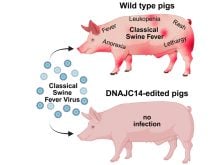RED DEER – Shock wave therapy used to smash kidney stones in people can treat lameness in horses.
Scott McClure, a veterinarian from Iowa State University, has successfully used shock wave technology on horses since 1998.
He explained the uses of this alternative therapy at the Alberta Horse Breeders and Owners conference in Red Deer Jan 14.
Shock wave therapy sends a thin wave of high pressure through tissues to the affected area within fractions of a second. It is just one tool among many used to treat tendon and ligament problems in horses.
Read Also

Animal protection delivery to change in Saskatchewan
The Saskatchewan government is looking for a new agency to handle animal welfare after Animal Protection Services of Saskatchewan decided not to renew its contract next year.
“This therapy does not replace rehabilitation in any form or fashion. Our objective is to take them through rehabilitation steps faster so we have less down time,” McClure said.
Besides the shock waves, he may use corrective shoes, steroids or antibiotics in a treatment plan.
Horses may require multiple treatments to accelerate healing, although McClure prefers to stop at three applications. His goal is to see them back in training within 60 days.
He has treated suspensory ligament desmitis. The suspensory ligament is like a sling at the back of the leg. If ligaments become damaged, this treatment appears to speed up healing.
Horses with tendonitis, also called bowed tendons, also receive relief.
Tendons are like a cable with many fibres and the treatment seems to drain off fluid that is causing swelling.
The injury usually occurs between the knee and fetlock on the back of the forelimbs. Tearing of tendon fibres results in swelling and creates a bulge in the area.
Other therapies and rest are needed, however, because the horse may look good but it still has a damaged tendon and needs care.
McClure said the treatment seems to stimulate bone growth and he has noticed new blood vessels form in the area to aid healing.
“One of the big issues in getting tendons to heal and stay healed and not rebow is having adequate blood flow there,” he said.
Shock waves also help treat dorsal metacarpal disease, called buck shins, which could lead to stress fractures. It can occur in both front legs and is often seen in young racehorses when excessive strain is placed on their legs.
Stress fractures can be treated in several ways by either allowing them to heal on their own, surgical removal of the damaged fragment, placing a screw in the bone or applying shock waves.
Shock waves can provide pain relief for up to two days.
Some vets also use this therapy to treat back and neck injuries as well as soft tissue injuries like bursitis.















